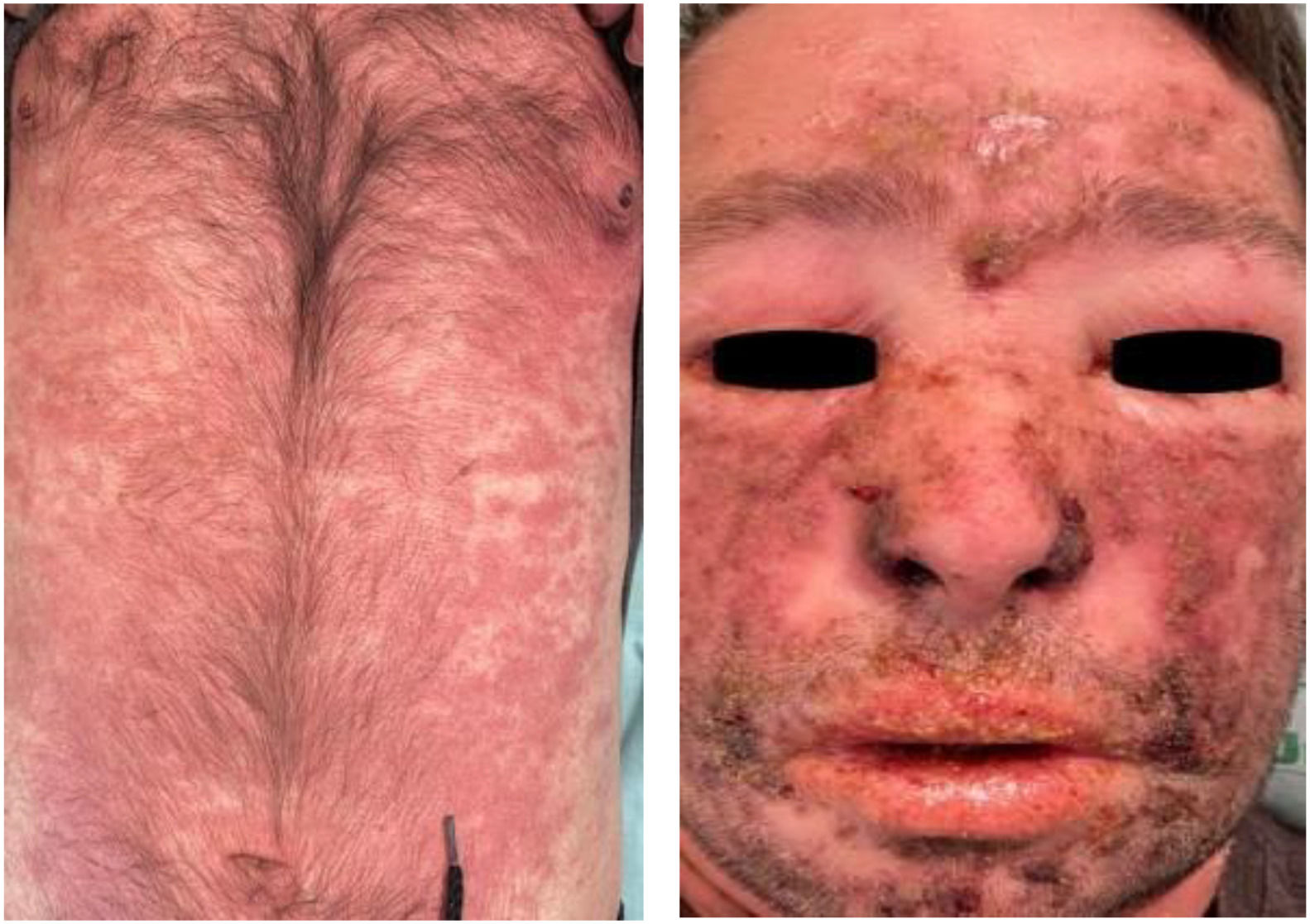
HEMO 2025 / III Simpósio Brasileiro de Citometria de Fluxo
Mais dadosLess than 10% of chronic lymphoproliferative diseases are caused by T lymphocytes and NK cells. In addition to their rarity, the greatest obstacles to their identification have been the diversity and phenotypic complexity of these cells. Extranodal T/NK cell lymphomas are more common in adult men (mean age 44-54 years), originate from NK cells (or in some cases from cytotoxic T lymphocytes), and cause extensive vascular damage with prominent necrosis. They are strongly associated with Epstein-Baar virus (EBV) infection and involve the upper aerodigestive tract (mainly nasal cavity), skin, and lymph nodes. It is a highly aggressive lymphoma, with low survival rates and poor response to treatment.
ReportMale patient, 42 years old, starts with cervical and inguinal lymph node enlargement. Underwent PET-CT on 04/28/23: lymph node enlargement in the inguinal, iliac, pericaval, left paraaortic, retrocrural regions, in pulmonary hila and various compartments of the mediastinum, axillary and cervical, in addition to diffuse hypermetabolism in the bone marrow and splenomegaly. Performed inguinal lymph node biopsy on 05/05/23 – Immunohistochemistry released on 05/21/23 – Pathological cells positive for BCL2 CD10 CD4 CD5 CD7 CD8 Tdt, KI67+100%, diffuse CD3+, cytoplasmic pattern. Evolved with progressive worsening of the clinical condition and pancytopenia. Bone marrow aspirate collected on 05/26/23 for Immunophenotyping showing: 4.1% CD56+ CD3(-) CD8-/+ CD4(-) NK CELLS; 15% MATURE (CD45++) POLYCLONAL T LYMPHOID CELLS (CD3++): . 3.8% CD4+ TCRALFA/BETA+ (TCRCBETA1+ 50%); . 8.8% CD8+ TCRALFA/BETA+ (TCRCBETA1+ 20%); . 0.5% CD8+ TCRGAMA/DELTA+; . 1.3% CD4+CD8+ TCRALFA/BETA+ (TCRCBETA1+ 30%); . 0.6% DOUBLE-NEGATIVE: 0.1% TCRALPHA/BETA+ AND 0.5% TCRGAMA/DELTA+ 11.3% MATURE CD8+ LYMPHOID CELLS (CD45++), WITH PARTIAL EXPRESSION OF SURFACE CD4 AND CD3, EXPRESSION OF CYTOPLASMIC CD3+ (EPSILON CHAIN), T MARKERS (CD2+ CD5+ CD7+) AND CYTOTOXIC/NK ANTIGENS (CD56+ CD16-/+ CD94+ Perforin+), and effector T cell phenotype (CCR7(-) CD27-/+ CD28-/+ CD45RA+ homogeneous). NK profile stage 4: CD56++ CD16-/+ and CD57(-) (Figure 1).
Figure 1: Mature CD8+ lymphoid cells, with partial expression of surface CD3, NK profile CD56++.
Negative antigens: CD25 CD57 CCR7 CD11C CD45RO CD1A CD117 CD30 TCRAlpha/Beta TCRCBeta1 TCRGama/Delta HLA-DR TDT and CD10. At that time, the patient presented skin lesions on the chest and face (Figures 2 and 3), his clinical condition worsened and he was admitted to the ICU. A cerebrospinal fluid sample was also infiltrated by T/NK cells. The phenotypic findings associated with the clinical condition led to the diagnostic conclusion of T/NK Cell Lymphoma. Serology tests for EBV were negative. He did not present clinical improvement, developed Mucormycosis and died.
Figure 2: Skin lesions on the chest. Figure 3: Skin lesions on the face.
Comments: Flow cytometry was indispensable in the diagnostic elucidation, in the separation of normal and pathological T and NK cell subpopulations of the sample, and in the rapid definition of lymphoma with a severe and aggressive clinical course.
References
- 1.
Bárcena P, Jara-Acevedo M, Tabernero MD, López A, Sánchez ML, García-Montero AC, et al. Phenotypic profile of expanded NK cells in chronic lymphoproliferative disorders: a surrogate marker for NK-cell clonality. Oncotarget. 2015;6:42938.
- 2.
Alaggio R, Amador C, Anagnostopoulos I, Attygalle AD, Araujo IBO, Berti E, et al. The 5th edition of the World Health Organization classification of haematolymphoid tumours: lymphoid neoplasms. Leukemia. 2022;36:7:1720-48.










